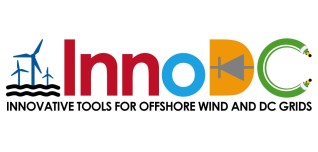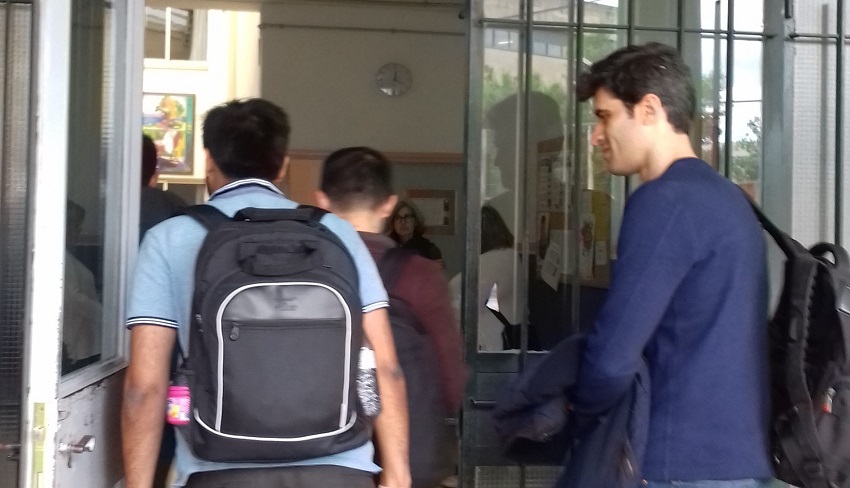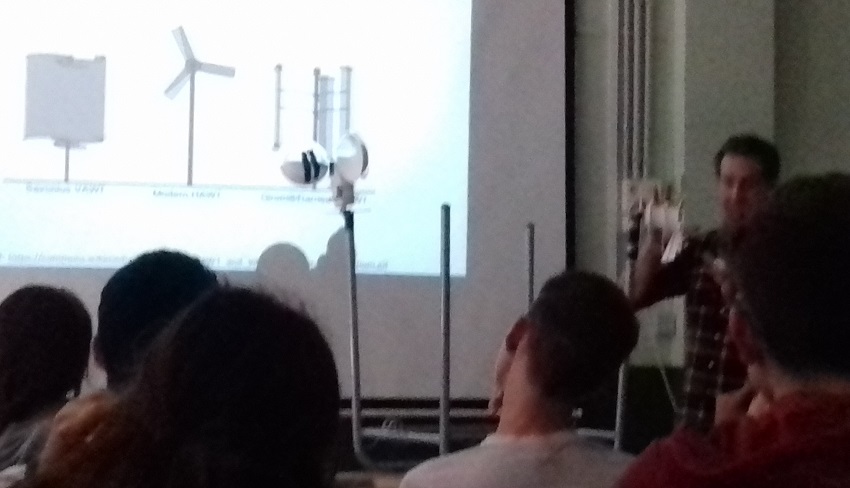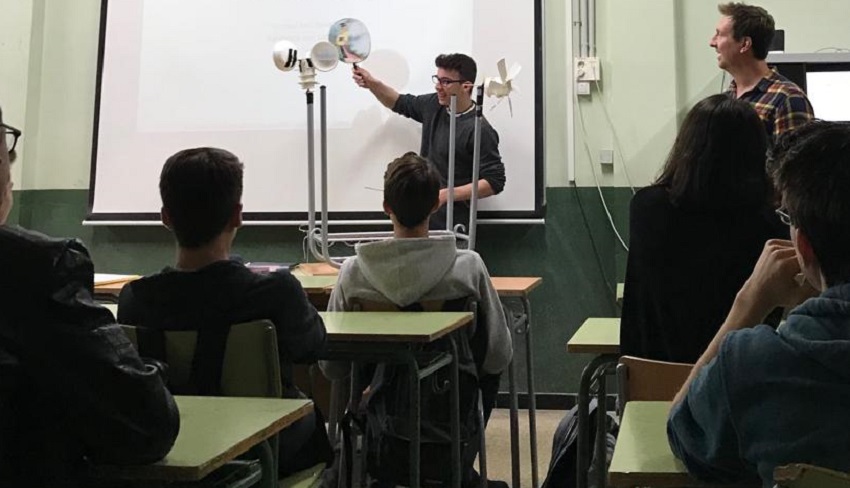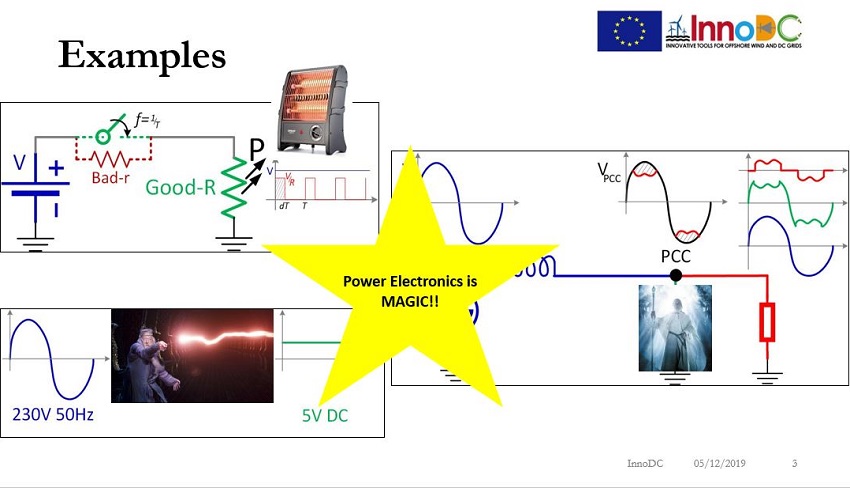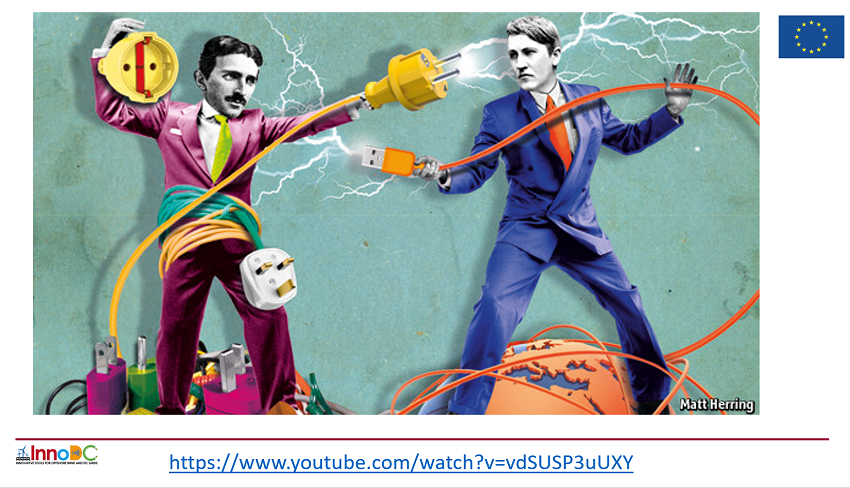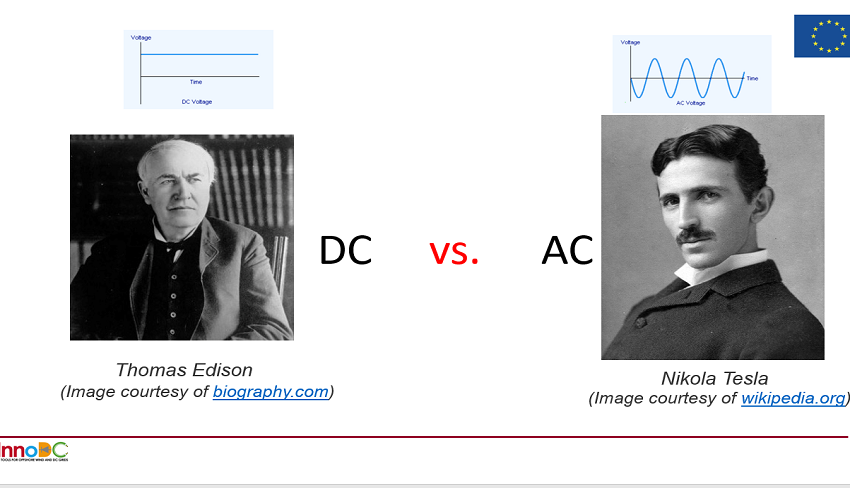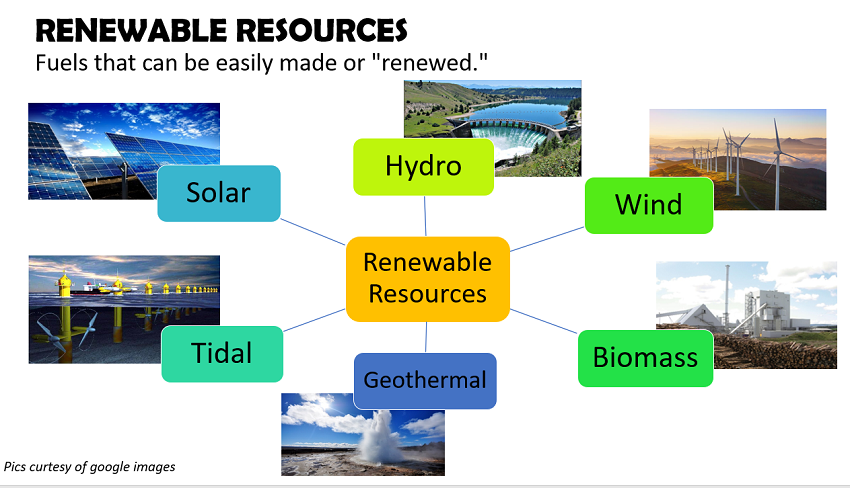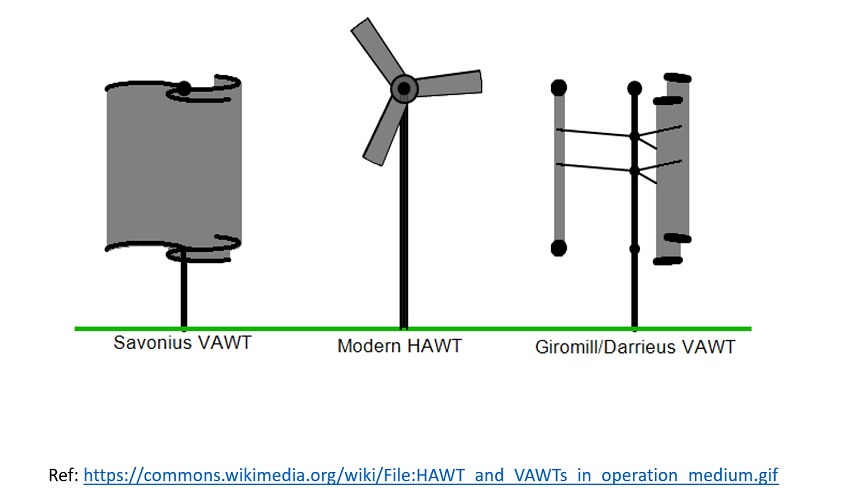Former MEDOW project researcher, Agustí Egea Alvarez, arranged for InnoDC to deliver a renewable energy workshop at Alexandre Deulofeu school in his home town, Figueres, Catalonia.
The InnoDC researchers wanted to make the session as fun and informative as possible, so designed the session with a mix of interaction, video and illustrations.
The teenagers learnt through a mix of Catalan, Spanish and English about wind-farms, energy and alternating & direct currents (AC & DC).
Jovana Dakic presented an overview of renewable energy, Emily Maggioli explained power electronics and Anubhav Jain leapt on stage to declare electronics as magic!
Peng Yang described the difference between AC and DC, then showed a fun animation on the Tesla and Edison ‘war of the currents’.
Stephen Hardy demonstrated his mini-turbines made from paper cups and plates, using socks as weights. One of the pupils successfully rotated them by waving a Japanese fan. The pupils now understand the difference between horizontal axis and vertical axis turbines (if you are curious, read his explanation below).
The researchers then visited the technical class who demonstrated their school projects and discussed technicalities.
Stephen Hardy – horizontal axis v. vertical axis turbines:
Have you ever wondered why the majority of wind turbines have a horizontal axis of rotation rather than a vertical one? Or have you ever thought it strange the arc created by the blades is not parallel, but perpendicular to the direction of the wind? The school pupils conducted experiments comparing a horizontal axis ‘lift’ based turbine model to a vertical axis ‘drag’ turbine model.
Modern turbines extract power from the wind using the principle of ‘lift’. Each blade is similar to an aeroplane’s wing. The shape of the blade is such that as air moves past the blade, it creates high- and low-pressure areas on either side. The resulting force moves the blade away from the high-pressure area and into the low-pressure one. On an aeroplane, the wings are fixed horizontally, so this force is always pointing upwards, lifting the plane off the ground. In a wind turbine, the position of the blades changes, creating a rotating force around the central hub.
Conversely, turbines based on the principle of ‘drag’ use a blade or cup arrangement to block the incoming wind and are therefore pushed in the direction of the wind itself. The central axis transforms the linear force of the wind into a rotational one. This design has several limitations, the most problematic being a blade that must move against the direction of the wind for a portion of each rotation. Furthermore, the maximum velocity of the blade is limited to the speed of the wind itself. Although it is not beneficial for power generation, it is used in wind speed measurement devices called cup anemometers.
